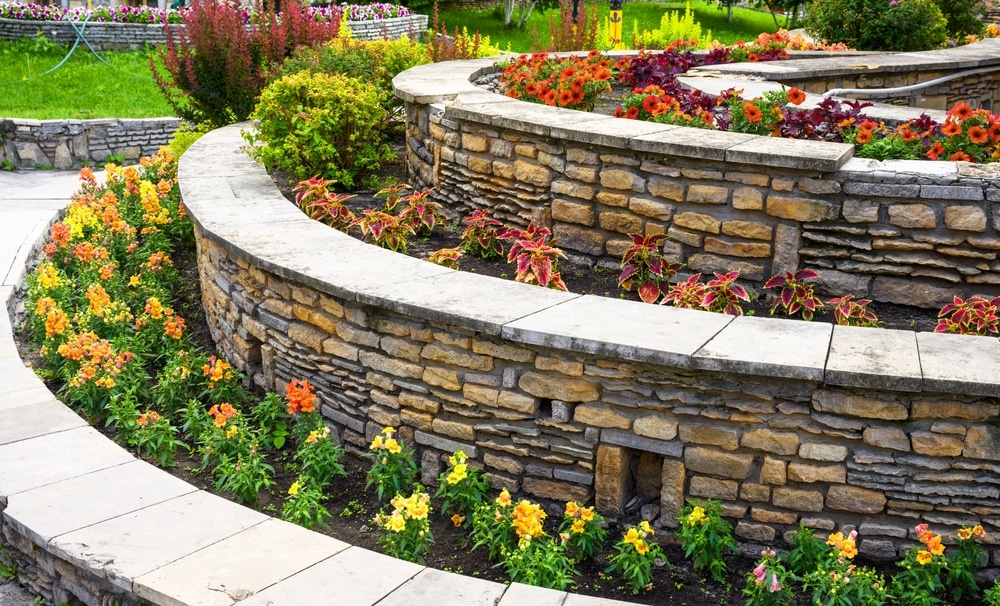
Retaining Wall Construction: Advanced Techniques for Strength and Durability
Retaining walls are essential in landscaping, offering both functional and aesthetic value by preventing soil erosion and creating usable spaces on sloped terrain. However, constructing a retaining wall that can handle significant soil pressure while maintaining its structural integrity over the years requires advanced techniques. Landscaping professionals and contractors must consider modern materials, precise engineering, and proper drainage methods to achieve long-lasting results. This guide explores the advanced methods and best practices for building durable retaining walls, focusing on materials like armour stone and aggregate to enhance performance.
1. Understanding the Importance of Wall Design and Load Analysis
Effective retaining wall construction begins with a thorough understanding of design requirements and soil mechanics. Improper load analysis is a common cause of wall failure, especially in applications where soil pressure is high or the wall exceeds standard heights.
Before construction, conduct a geotechnical assessment to understand soil conditions, including its load-bearing capacity, drainage characteristics, and slope stability. Utilize lateral earth pressure calculations to determine the forces exerted by retained soil and adjust the wall design accordingly. Engineering considerations should also factor in external loads such as vehicle traffic or nearby structures.
Key takeaway: Adequate design and load analysis are essential to prevent common structural issues such as bulging, tilting, or complete collapse.
2. Advanced Material Selection: Armour Stone and High-Performance Aggregates
Material selection directly influences the strength and longevity of a retaining wall. Armour stone is a popular choice for professionals due to its durability, weight, and resistance to weathering. Its natural appearance makes it ideal for high-end landscaping projects.
In addition to the primary material, proper backfill is critical. Use well-graded crushed stone or coarse aggregate instead of finer materials like sand or clay. Aggregates with high permeability allow for effective drainage, lowering hydrostatic pressure and decreasing the risk of wall failure. Avoid using materials that retain water or promote soil settlement.
Pro tip: Combining armour stone with well-compacted crushed stone aggregates ensures a balance between structural strength and drainage efficiency.
3. Proper Drainage Systems to Prevent Hydrostatic Pressure
One of the most common causes of retaining wall failure is inadequate drainage, which leads to hydrostatic pressure build-up behind the wall. Even the strongest materials cannot withstand the forces generated by trapped water.
To combat this, implement advanced drainage solutions such as:
- Perforated drainage pipes are installed at the base of the wall to collect and divert water.
- Geotextile fabrics to separate soil from drainage aggregate, preventing clogging.
- Weep holes to allow water to escape naturally.
- Graded backfill zones designed to facilitate water flow away from the wall.
Tip: For larger walls, consider using drainage composites or geocomposite panels to ensure effective water management without the need for extensive maintenance.
4. Reinforcement Techniques for Enhanced Strength
For taller or heavily loaded retaining walls, reinforcement is necessary to maintain stability. Modern reinforcement techniques include the use of geogrid systems and tiebacks.
- Geogrid reinforcement: These polymer-based grids are placed between layers of backfill to stabilize the soil and distribute loads evenly. Geogrids are especially effective in segmental retaining walls (SRWs), where modular blocks interlock with the grid.
- Tiebacks or deadman anchors: Used to anchor the wall into the ground, they provide additional resistance against lateral soil pressure, particularly in high-stress applications.
- Staggering armour stone layers: For stone-based walls, ensure that each layer overlaps the previous one to improve load transfer and overall stability.
Pro tip: Geogrid-reinforced walls can achieve higher wall heights without the risk of structural compromise, making them ideal for large-scale projects.
5. Precision Construction Techniques
The construction process is critical in ensuring the longevity of a retaining wall. Start with a solid foundation to support the weight of the structure.
- Excavation and base preparation: Dig down to a stable subsoil level and lay a compacted base of crushed stone or gravel. The base should be level and thick enough to distribute the wall’s load evenly.
- Layered construction: For each course of blocks or stones, ensure that they are level and properly aligned. Staggering the joints between rows prevents vertical seams and adds strength.
- Handling slopes and curves: When constructing on uneven terrain, use custom-cut armour stones or adjustable modular systems to maintain consistency.
Note: Compact the backfill material in layers to minimize settlement and enhance long-term wall stability.
6. Long-Term Maintenance for Durability
Even the best-built retaining walls require periodic maintenance to remain effective. Inspect walls regularly for signs of movement, cracking, or drainage issues. Minor problems, if addressed early, can prevent costly repairs or complete failure.
- Clean and maintain drainage systems: Clear debris from weep holes and drainage pipes to ensure proper water flow.
- Reapply or replace geotextile barriers: Over time, these barriers may degrade and need to be replaced to prevent soil intrusion into the drainage system.
- Seal joints and repair cracks: Small cracks can lead to water infiltration and freeze-thaw damage if left untreated.
Building a durable retaining wall requires more than just stacking stones or blocks; it involves precise design, advanced materials, and effective construction techniques. By incorporating armour stone, high-performance aggregates, and modern reinforcement methods, landscaping professionals can ensure that their projects stand the test of time. Proper drainage and long-term maintenance further contribute to the wall’s performance, making it a reliable feature in any landscape.
Landscaping contractors who stay updated on the latest innovations and techniques in retaining wall construction will be better equipped to handle demanding projects and deliver superior results to clients.
